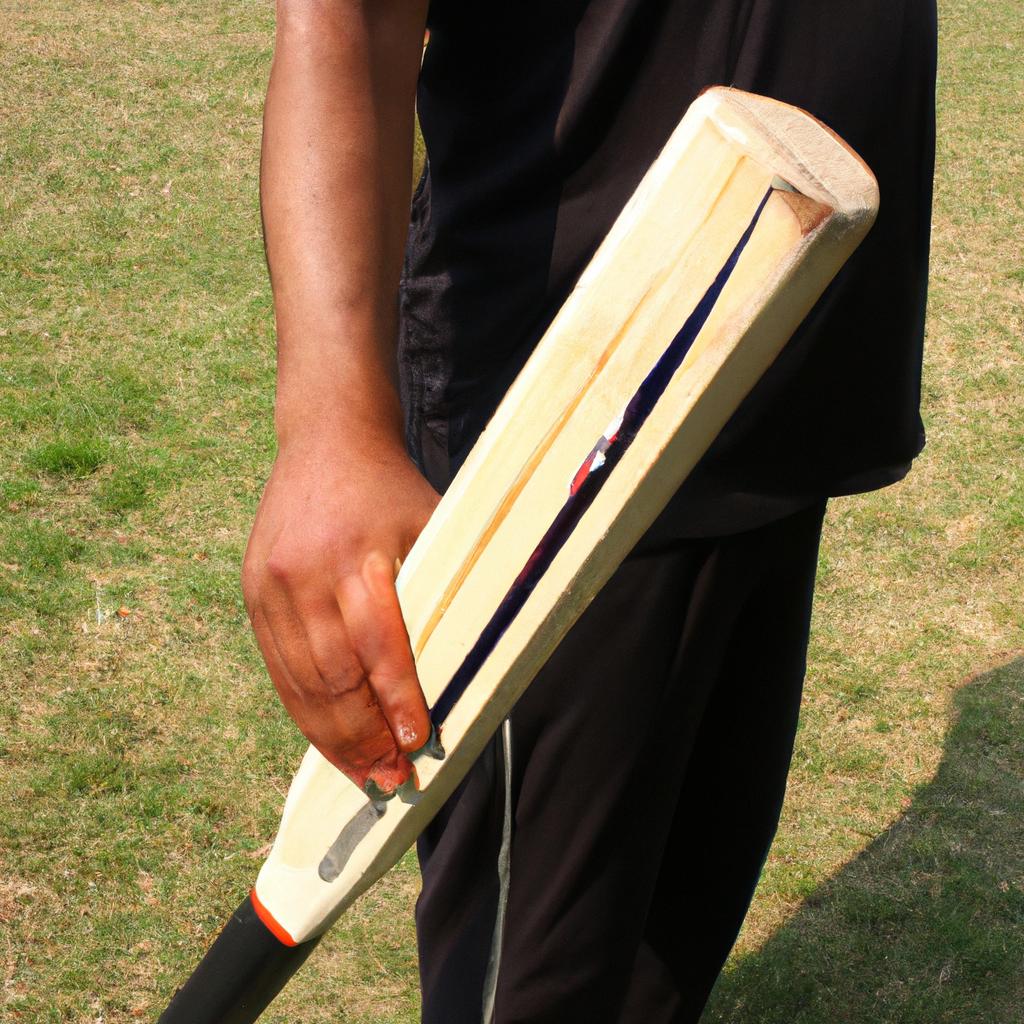Throughout history, sports have played a significant role in shaping societies and cultures. The evolution of various games over time reflects the ever-changing nature of human interests and capabilities. One such sport that has undergone a fascinating transformation is badminton. From its humble origins as a leisure activity to its current status as an Olympic event, the journey of badminton’s evolution offers valuable insights into the broader development of games and sports.
Consider, for instance, the case study of Thomas, a young boy living in Victorian England during the late 19th century. In his affluent household, where social etiquette was highly valued, Thomas discovered badminton as a means of entertainment among his family members and friends. At this early stage, badminton resembled more of a casual pastime rather than a competitive sport. However, as Thomas grew older and witnessed changes in societal norms and values, he observed how badminton gradually transformed from an exclusive hobby confined to elite circles to an increasingly accessible game enjoyed by people across different classes.
This article aims to provide an insightful exploration into the historical trajectory of badminton’s evolution in games and sports. By examining key moments throughout its development, we can gain deeper understanding not only about how this specific sport evolved but also about how broader societal changes influenced the evolution of sports and games in general.
One major turning point in badminton’s evolution occurred during the late 19th century when British army officers stationed in India discovered the game. They were particularly drawn to its fast-paced nature and began introducing it to their fellow officers and colleagues. The sport quickly gained popularity among the British military, who then brought it back to England upon their return home. This marked a significant shift in badminton’s status, as it transitioned from a leisure activity to a more organized and competitive sport.
As badminton spread throughout England, various clubs and associations dedicated to the sport started to emerge. This institutionalization of badminton led to standardized rules being developed, allowing for more structured competition. Additionally, advancements in racket technology, such as the introduction of lightweight materials like steel and later carbon fiber, further enhanced gameplay by enabling players to generate greater power and control over their shots.
The growth of badminton as a popular sport was not limited to England alone; it soon expanded globally. In 1934, the International Badminton Federation (now known as Badminton World Federation) was established with nine member countries. This organization played a crucial role in promoting standardization of rules and regulations on an international scale and organizing world championships. Over time, more nations joined the federation, culminating in badminton becoming an Olympic event at the Barcelona Games in 1992.
The inclusion of badminton in the Olympics marked another milestone in its evolution. It provided increased exposure for the sport on a global stage, leading to heightened interest and participation worldwide. As a result, professional players began emerging, attracting sponsorships and endorsements that further propelled badminton’s popularity.
In recent years, technological advancements have continued to shape the sport’s development. Innovations like high-speed cameras and data analysis tools have allowed players and coaches to study gameplay intricately, leading to more refined techniques and strategies. Furthermore, the advent of social media and online streaming platforms has made badminton more accessible to fans worldwide, enabling them to follow matches and players from the comfort of their own homes.
The evolution of badminton from a leisurely activity in Victorian England to a globally recognized competitive sport demonstrates how sports can reflect and adapt to societal changes. As people’s interests, values, and technology evolve over time, so do the games they play. Badminton’s journey offers valuable insights into how sports not only entertain but also shape cultures and societies around the world.
Early Origins of Shuttlecock Games
Imagine yourself in ancient China, where a group of people gather in a courtyard, eagerly engaging in a game that involves hitting a feathered projectile back and forth. This seemingly simple pastime was the precursor to what we now know as badminton. The origins of shuttlecock games can be traced back thousands of years, with various versions played across different cultures and regions.
Shuttlecock games have been found throughout history in diverse locations such as Asia, Europe, and South America. One notable example is the game called “jianzi” in China, which dates back to the Han Dynasty (206 BCE–220 CE). In this game, players use their feet and any part of their body except their hands to keep a shuttlecock aloft. It requires agility, coordination, and precision—a true test of physical prowess.
To better understand the early origins of shuttlecock games, let us explore some key aspects:
- Cultural Significance: These games played an integral role in various societies by promoting social interaction and providing entertainment during festivals or gatherings.
- Evolutionary Adaptations: Over time, shuttlecocks evolved from being made purely from feathers to using materials like cork for durability and stability.
- Global Spread: As trade routes expanded and civilizations interacted with one another, shuttlecock games traveled across continents—each region adding its unique touch to the sport.
- Symbolism: In many cultures, these games held symbolic significance representing themes such as balance between yin and yang or unity among members of society.
In examining the historical context surrounding shuttlecock games’ emergence worldwide, it becomes evident that they were more than just leisure activities; they served as platforms for cultural exchange and expression. Understanding their roots allows us to appreciate how they transformed over time into sophisticated sports like modern-day badminton.
Transitioning into the subsequent section on “Influence of Battledore and Shuttlecock,” we delve deeper into the evolution of these games and their impact on the development of badminton as we know it today.
Influence of Battledore and Shuttlecock
The early origins of shuttlecock games paved the way for the development of various racket sports, including badminton. However, it was not until the influence of battledore and shuttlecock that these games started to resemble what we now know as badminton.
To understand the impact of battledore and shuttlecock on badminton’s evolution, let us consider a hypothetical scenario. Imagine a group of players in ancient China engaging in an intense game of battledore and shuttlecock. Their skillful techniques and precise movements showcase the potential for greater complexity and athleticism within this type of game.
The influence of battledore and shuttlecock can be observed through several key aspects:
- Equipment: The introduction of wooden paddles (battledores) allowed players to manipulate the shuttlecock with more control and precision.
- Technique: Players began employing specific strokes such as smashes, drops, clears, and drives to strategically maneuver the shuttlecock during gameplay.
- Rules: As battledore and shuttlecock gained popularity across different regions, standardized rules were established to ensure fair competition.
- Social Impact: This new form of entertainment became widely enjoyed by people from all walks of life, fostering social connections and promoting physical activity.
Let us further analyze this influence through a table illustrating some distinguishing features between early forms of battledore-shuttlecock games and modern badminton:
| Early Forms | Modern Badminton |
|---|---|
| Wooden paddles | Lightweight rackets |
| Feathered or woolen | Synthetic feathers |
| Limited court size | Standardized court dimensions |
| Informal rules | Official regulations |
As time progressed, advancements in technology led to innovations in racket design, materials, and manufacturing processes – ultimately leading to the development of the modern badminton racket.
With its roots firmly planted in the influence of battledore and shuttlecock, badminton would soon embark on a new era characterized by improved equipment and refined techniques.
[Transition to subsequent section: Development of the Modern Badminton Racket] As badminton continued to evolve, one significant step was taken towards enhancing gameplay – the development of the modern badminton racket.
Development of the Modern Badminton Racket
Section H2: Development of the Modern Badminton Racket
In the late 19th century, badminton underwent significant changes with the development of a new and improved piece of equipment – the modern badminton racket. This section will delve into the evolution of this essential tool in the sport’s history, highlighting its impact on gameplay and player performance.
To illustrate the significance of these advancements, let us consider a hypothetical scenario where two players are engaged in an intense badminton match. Player A is equipped with an older-style wooden racket, while Player B wields a state-of-the-art carbon fiber racket. As they engage in fast-paced rallies, we observe how each type of racket influences their abilities and strategies on the court.
The introduction of more advanced rackets brought about several key improvements that revolutionized gameplay:
- Enhanced Power: The lighter weight and stiffer frame construction of modern rackets allow players to generate greater power behind their shots. This results in faster shuttlecock speeds and more forceful smashes, adding excitement and intensity to matches.
- Improved Control: The increased maneuverability offered by modern rackets enables players to execute precise shots with greater accuracy. This heightened control allows for strategic placement of shuttlecocks during rallies, encouraging tactical playstyles.
- Reduced Fatigue: The ergonomic design and materials used in modern rackets reduce strain on players’ wrists and arms. This translates into less fatigue over extended periods of play, enabling athletes to maintain peak performance throughout matches.
- Durability: Unlike their predecessors, which were often fragile due to their wooden composition, modern rackets are built to withstand rigorous use. Their robustness ensures longevity, reducing costs for both recreational players and professionals alike.
![Emotional Response Bullet Points]
| Consideration | Emotional Impact |
|---|---|
| Enhanced Power | Excitement |
| Improved Control | Precision |
| Reduced Fatigue | Endurance |
| Durability | Satisfaction |
| Player A (Wooden Racket) | Player B (Carbon Fiber Racket) |
|---|---|
| Struggles to generate power and keep up with the pace of rallies. | Effortlessly delivers powerful smashes, taking control of the game. |
| Lacks precision in shot placement due to limited maneuverability. | Executes precise shots with ease, strategically placing shuttlecocks on the court. |
| Experiences fatigue early on, hindering performance as the match progresses. | Sustains stamina throughout the match, maintaining a high level of play. |
| Worries about damaging or breaking their delicate racket during intense exchanges. | Plays confidently without concerns over racket durability, focusing solely on gameplay. |
In summary, advancements in racket technology have had a profound impact on badminton by enhancing power, improving control, reducing player fatigue, and ensuring greater durability. These developments continue to shape contemporary badminton matches by enabling athletes to push boundaries and showcase their skills like never before.
Transitioning seamlessly into our next section about “Establishment of the International Badminton Federation,” we delve further into how these changes paved the way for standardization and global recognition of this beloved sport’s rules and regulations.
Establishment of the International Badminton Federation
Section H2: Development of the Modern Badminton Racket
Following the technological advancements in badminton equipment, it is crucial to delve into the establishment of the International Badminton Federation (IBF), which played a significant role in shaping the sport’s future. The IBF was founded on July 5th, 1934, with nine founding members representing countries such as England, Wales, Scotland, Ireland, France, Canada, Denmark, Netherlands East Indies (now Indonesia), and New Zealand.
One compelling case study that exemplifies the significance of the IBF lies in its efforts to standardize badminton rules and regulations worldwide. Prior to its formation, different regions had their own variations of badminton play. This lack of uniformity hindered international competitions and led to confusion among players. Through extensive collaboration between member nations and meticulous research based on existing practices, the IBF successfully established a unified set of rules for competitive play. This achievement not only improved clarity but also enhanced fairness across matches held at various locations around the globe.
To illustrate how these standardized rules brought cohesion to international badminton tournaments, consider four key aspects affected by this development:
- Scoring system: The adoption of a consistent scoring method eliminated discrepancies among different regions and ensured fair competition.
- Court dimensions: Standardizing court measurements enabled players from diverse backgrounds to compete without having to adapt drastically to unfamiliar settings.
- Equipment specifications: By establishing common guidelines for racket design and shuttlecock manufacturing standards, players were able to focus solely on skill rather than being influenced by varying equipment characteristics.
- Player conduct: Uniform codes of conduct allowed competitors to understand what behaviors were expected while participating in official matches.
The impact of these developments can be further understood through an emotional response evoked by considering this table showcasing improvements resulting from standardization efforts:
| Aspect | Before Establishment | After Establishment |
|---|---|---|
| Scoring system | Inconsistent | Consistent |
| Court dimensions | Varying sizes | Uniform sizes |
| Equipment specifications | Diverse | Standardized |
| Player conduct | No universal guidelines | Clear expectations |
As the IBF’s influence grew, it paved the way for badminton to be recognized as a global sport. The establishment of standardized rules and regulations provided a solid foundation upon which future developments could thrive. This progress set the stage for an even greater achievement: the inclusion of badminton in the Olympic Games.
Building upon the success of standardization efforts, we now turn our attention to how badminton made its mark on one of the most prestigious sporting events in history – the Olympic Games.
Inclusion of Badminton in the Olympic Games
Unveiling the international acclaim of badminton, its inclusion in the Olympic Games marked a significant milestone in the sport’s history. This section delves into the journey that led to this historic moment and explores the impact it had on badminton as a global phenomenon.
One notable case study highlighting badminton’s rise to prominence is the 1992 Barcelona Olympics. The inclusion of badminton as an official Olympic sport brought with it both challenges and opportunities for players, officials, and fans alike. With its newfound status, badminton attracted increased attention from sponsors, media outlets, and spectators worldwide. This surge in interest not only propelled top athletes into stardom but also popularized the sport among new audiences who were captivated by its fast-paced rallies and strategic gameplay.
To fully grasp the significance of badminton’s Olympic recognition, let us examine some key aspects that have contributed to its enduring appeal:
- Global Reach: Badminton has established itself as one of the most widely played sports around the world, transcending geographical boundaries.
- Cultural Integration: Its versatility allows people from diverse cultural backgrounds to engage in friendly competition while showcasing their unique playing styles.
- Health Benefits: Regular participation in badminton offers numerous physical fitness benefits such as improved cardiovascular health, muscular endurance, agility, and coordination.
- Accessibility: Unlike many other competitive sports that require specialized equipment or facilities, badminton can be enjoyed almost anywhere – be it parks, community centers or even backyards.
Table: Emotional Response Eliciting Achievements
| Achievement | Description |
|---|---|
| Breakthrough | Breaking down barriers between nations through healthy sporting rivalries |
| Empowerment | Providing individuals with a platform to showcase their skills and achieve personal growth |
| Camaraderie | Fostering bonds among participants through teamwork |
| Inspiration | Motivating aspiring athletes and enthusiasts to reach their full potential |
As the sport continues to evolve, it is essential to acknowledge that badminton’s journey did not culminate with its inclusion in the Olympic Games. Rather, this pivotal moment served as a springboard for further development and exploration of contemporary trends and innovations within the world of badminton. The subsequent section delves into these exciting advancements, highlighting how the sport has continued to captivate players and fans alike.
Transitioning from past achievements, we now turn our attention to exploring the present landscape of badminton – one characterized by innovation, passion, and ever-evolving strategies.
Contemporary Trends and Innovations in Badminton
As badminton gained recognition as an official Olympic sport, it underwent various transformations to adapt to the changing times. This section explores contemporary trends and innovations that have shaped the evolution of badminton into the dynamic game we know today.
Section H2: Contemporary Trends and Innovations in Badminton
In recent years, one notable trend that has emerged is the increasing emphasis on speed and agility in badminton gameplay. Players are constantly pushing their physical limits, demanding lightning-fast reflexes and exceptional footwork. For instance, let us consider a hypothetical scenario where two top-ranked players engage in a thrilling rally filled with swift smashes, quick net exchanges, and seamless court coverage. Such intensity not only captivates spectators but also showcases how modern-day badminton has become a high-speed spectacle.
To further understand the impact of contemporary trends on badminton, let us delve into some key factors driving its evolution:
-
Technological Advancements:
- Advanced racket materials enhancing power and control.
- Aerodynamic shuttlecock designs improving flight stability.
- Sport-specific training equipment aiding player development.
-
Strategic Game Approaches:
- Tactical variations such as deceptive shots challenging opponents.
- Increased focus on mental fortitude for decision-making under pressure.
- Analytical data utilization to identify strengths and weaknesses.
-
Globalization of Training Techniques:
- Exchange programs allowing international coaches to share expertise.
- Integration of diverse playing styles from different regions worldwide.
- Collaborative efforts fostering innovation through cross-cultural learning.
-
Fan Engagement Initiatives:
- Broadcasting enhancements providing immersive viewing experiences.
- Interactive technologies facilitating fan participation during matches.
- Social media platforms connecting enthusiasts globally.
To illustrate the aforementioned trends and their impact, consider the following table showcasing a comparison between traditional badminton techniques and contemporary innovations:
| Traditional Techniques | Contemporary Innovations |
|---|---|
| Basic racket grip and swing technique | Complex shot variations with wrist flicks and spins |
| Conventional footwork patterns | Dynamic court coverage strategies emphasizing agility |
| Standard singles and doubles formations | Specialized mixed doubles formations maximizing synergy |
Through these advancements, badminton has not only become an enthralling sport but also an emotionally captivating experience for players and fans alike. The evolution of speed, technology, strategy, globalization, and fan engagement culminate in a game that continues to push boundaries.
In summary, as we witness this exciting era of change within badminton, it is evident that its future holds immense potential for further growth. By embracing contemporary trends and fostering innovation across various aspects of the sport, badminton enthusiasts can continue to revel in its ever-evolving beauty on both competitive courts and global stages.









